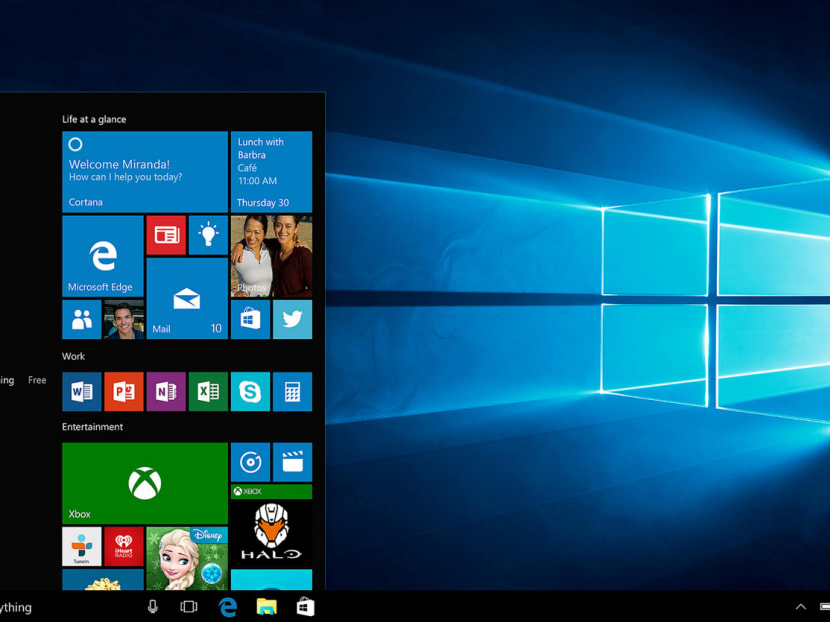Windows 10, the OS that Windows 8 should have been
LONDON — Windows 10, the latest version of Microsoft’s 29-year-old operating system, launched worldwide late last month. Following a hostile reception to Windows 8 in 2012, which was only placated in small part by the Windows 8.1 update in 2013, Microsoft is hoping that Windows 10 can help it regain favour among its 1.5 billion daily users.

The Windows 10 desktop showing the Start menu. The new Start menu has a panel of live tiles where people can ‘pin’ their favourite apps, but it also has a traditional Windows 7-style Start menu, allowing users to sort through all of their files, apps and settings systematically. Photo: Microsoft
LONDON — Windows 10, the latest version of Microsoft’s 29-year-old operating system, launched worldwide late last month. Following a hostile reception to Windows 8 in 2012, which was only placated in small part by the Windows 8.1 update in 2013, Microsoft is hoping that Windows 10 can help it regain favour among its 1.5 billion daily users.
Windows 10 rights a lot of the wrongs done by Microsoft in Windows 8. One of the things people hated about Windows 8 was the feeling that they were constantly being pushed to use “live tiles”, which were designed for touch-based computing, even when they were using a traditional desktop setup with a keyboard and mouse.
Another was the removal of the Start menu, which many people relied on as their first point of access to all software. This was replaced in Windows 8.1 with a Start button in the bottom left-hand corner of the screen, which launched the tile-based touch user interface that most people were trying to escape.
Although live tiles are still a feature of Windows 10, they are not nearly as obtrusive. When you open up the new Start menu, there is a panel of live tiles on the right, where people can “pin” their favourite apps, but there is also a traditional Windows 7-style Start menu on the left, allowing users to sort through all of their files, apps and settings systematically.
More importantly, clicking on a live tile does not result in you being transported to another virtual universe where the app takes over your entire screen. Rather, it opens in a neat little window on your desktop, and it generally behaves in a much more intuitive way.
Within this context, live tiles seem less repellent than they were in Windows 8. They blend much more into the wider user experience in desktop mode, and if you really cannot stand the sight of them in your Start menu, you can unpin them all.
The advantage of having them, though, is that if you are using a convertible device that operates in both desktop and tablet mode, then applications downloaded from the Windows Store will automatically adjust themselves to suit the mode, making switching between the keyboard and touch interface feel seamless.
Microsoft has also replaced the despised “Charms” bar from Windows 8, which appears when you swipe or click on the right-hand side of the screen. This was replaced by an “Action Center” that provides notifications and quick access to settings, and is genuinely quite useful.
What Windows 7 users, in particular, will like about Windows 10 is the speed and responsiveness of the new system. Given that Windows 7 is now six years old, the software inevitably feels a bit clunky, but it is really noticeable that programmes start faster and run faster in Windows 10, and the whole system feels more slick.
If you stopped using Internet Explorer years ago, Microsoft’s new Web browser, Edge, is a revelation. It feels more like Google Chrome, with a light, stripped-back user interface and a simple set of tools along the top, under the search bar.
For example, “favourites” lets you bookmark a page and cache it for reading offline, “web note” lets you annotate live pages and then save a screenshot of the page, and “share page” lets you send a link to friends via email or social network.
Read mode is also great for people who like to read long articles online, allowing you to strip out all the ads, sidebars, pop-ups and links, and scroll through a single column of text and pictures. You cannot use it on every page, and you still have to go back to the standard layout in order to navigate, but it is a really nice user-friendly feature.
There are many other features in Windows 10, such as the ability to run multiple “desktops” side by side — the virtual equivalent of having multiple PC monitors with different apps open on each screen. It is quite a niche feature, but one that some people will no doubt find useful. You can also “snap” applications that are open to different corners of the screen to make them easier to view.
Windows 10 makes sense. These days, technology should be intuitive enough that you can just pick it up and use it without any instructions or guidance, and Windows 10 just about achieves that. While there are still bumps to iron out, Windows 10 is what Windows 8 ought to have been — a piece of software that is suitable for the mobile era but that does not neglect the millions of people who still use it on a desktop. The Daily TELEGRAPH





